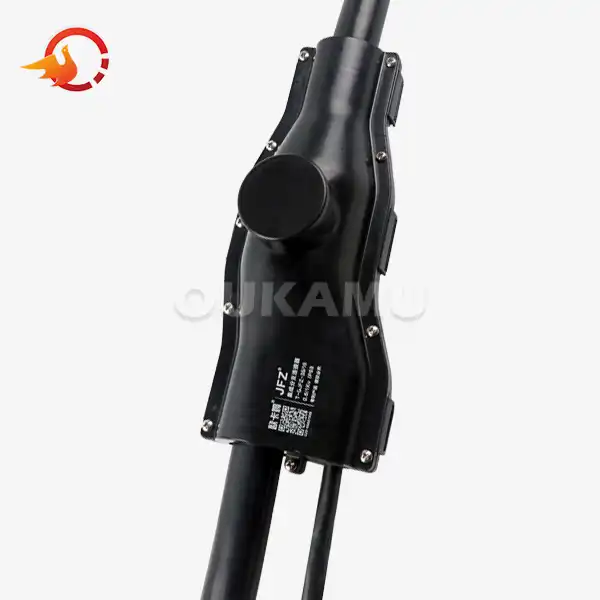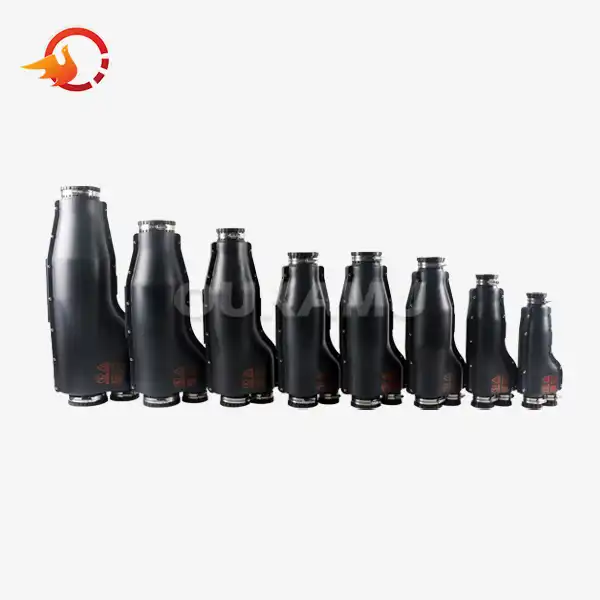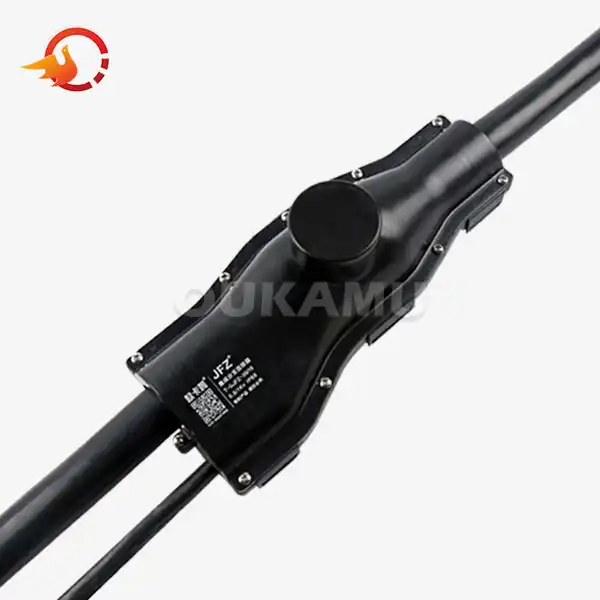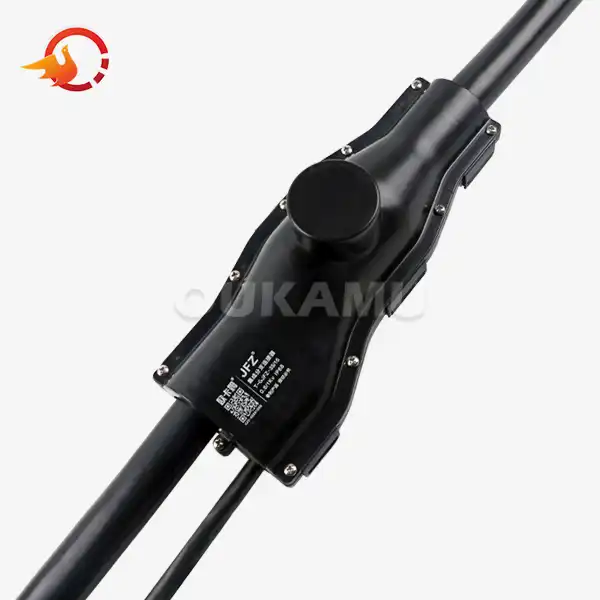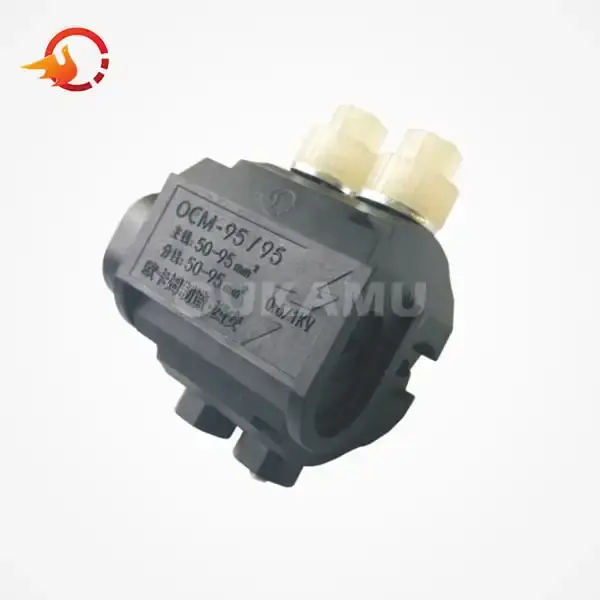What is a straight joint in electrical?
 2025-04-23 09:27:07
View:389
2025-04-23 09:27:07
View:389In the world of electrical installations, straight joints play a crucial role in connecting and extending cables. These unsung heroes of the electrical industry ensure seamless power transmission while maintaining safety and reliability. Let's delve into the world of low voltage waterproof straight-through joint and explore their significance, types, and applications.
Understanding Straight Joints in Electrical Systems
A straight joint, also known as a cable joint or splice, is a specialized connection used to join two separate lengths of electrical cable. This joint creates an uninterrupted electrical path, allowing power to flow seamlessly from one cable section to another. Straight joints are essential in various electrical applications, from residential wiring to large-scale industrial installations.
The Purpose of Straight Joints
Straight joints serve several important purposes in electrical systems:
- Extending cable lengths
- Repairing damaged cable sections
- Connecting cables of different sizes or types
- Facilitating cable installation in challenging locations
- Maintaining electrical continuity and insulation integrity
Components of a Straight Joint
A typical straight joint consists of several key components:
1. Conductor connectors: These join the individual conductors of the cables being spliced.
2. Insulation: This material surrounds the conductor connections to prevent electrical leakage.
3. Outer sheath: A protective layer that encloses the entire joint, providing mechanical strength and environmental protection.
4. Sealing materials: These prevent moisture ingress and ensure the joint remains watertight.
5. Stress control elements: In medium and high voltage applications, these components manage electrical stress within the joint.
The specific components and design of a low voltage waterproof straight-through joint may vary depending on the voltage level, cable type, and environmental conditions.
Types of Straight Joints in Electrical Applications
Straight joints come in various types, each designed for specific applications and voltage levels. Understanding these types helps in selecting the appropriate joint for a given electrical installation.
Low Voltage Straight Joints
Low voltage straight joints are used in systems operating at voltages up to 1000V. These joints are commonly found in residential and commercial wiring applications. Some popular types include:
- Heat shrink joints: These utilize heat-shrinkable tubing to create a tight, insulated seal around the connection.
- Cold shrink joints: Similar to heat shrink joints, but using pre-expanded tubing that shrinks at room temperature.
- Resin-filled joints: These joints use a two-part resin that cures to form a solid, insulating enclosure.
- Gel-filled joints: Utilizing a non-curing gel, these joints provide excellent moisture resistance and are easy to install.
Low voltage straight joints are typically simpler in design and easier to install compared to their higher voltage counterparts.
Medium and High Voltage Straight Joints
For systems operating above 1000V, medium and high voltage straight joints are employed. These joints require more complex designs to manage higher electrical stresses. Common types include:
- Premolded joints: Factory-made joints with pre-engineered stress control and insulation layers.
- Tape-based joints: These utilize specialized insulating and semiconducting tapes to build up the joint structure.
- Push-on joints: Featuring pre-fabricated rubber components that are pushed onto the prepared cable ends.
- Hybrid joints: Combining elements of different joint types for optimal performance in specific applications.
Medium and high voltage straight joints often require specialized tools and trained personnel for proper installation.
Specialized Straight Joints
Some applications require low voltage waterproof straight-through joints with unique features or capabilities:
- Submersible joints: Designed for underwater applications or areas prone to flooding.
- Fire-resistant joints: Engineered to maintain circuit integrity during fire conditions.
- Transition joints: Used to connect cables of different types or constructions.
- Branch joints: Allow for the connection of a branch cable to a main cable without cutting the main line.
Installation and Maintenance of Straight Joints
Proper installation and maintenance of straight joints are crucial for ensuring their long-term performance and reliability. Let's explore the key aspects of installing and maintaining these essential electrical components.
Installation Best Practices
Installing straight joints requires careful attention to detail and adherence to manufacturer guidelines. Here are some best practices to follow:
- Proper cable preparation: Ensure clean, precise cuts and careful removal of insulation layers.
- Correct sizing: Choose a joint kit appropriate for the cable size and type.
- Clean work environment: Install joints in a dry, clean area to prevent contamination.
- Follow instructions: Adhere strictly to the manufacturer's installation procedures.
- Use appropriate tools: Employ specialized tools designed for joint installation when required.
- Conduct tests: Perform electrical tests to verify the integrity of the installed joint.
Proper installation is critical for the joint's performance and longevity. Incorrectly installed joints can lead to premature failure and potential safety hazards.
Maintenance and Inspection
While straight joints are generally designed for long-term, maintenance-free operation, regular inspections can help identify potential issues before they become critical. Maintenance practices may include:
- Visual inspections: Check for signs of physical damage, moisture ingress, or overheating.
- Thermal imaging: Use infrared cameras to detect hot spots that may indicate poor connections.
- Partial discharge testing: For medium and high voltage joints, this can detect internal insulation degradation.
- Insulation resistance testing: Verify the integrity of the joint's insulation.
- Environmental protection: Ensure that joint enclosures or chambers are properly sealed and free from water ingress.
Regular maintenance and timely replacement of deteriorating joints can prevent unexpected failures and extend the life of the electrical system.
Troubleshooting Common Issues
Despite best practices, issues with low voltage waterproof straight-through joints can occasionally arise. Common problems and their potential causes include:
- Overheating: Often due to poor conductor connections or undersized joints.
- Moisture ingress: Can result from improper sealing or damage to the joint's outer layer.
- Partial discharge: May indicate insulation breakdown within the joint.
- Mechanical damage: Can occur due to external forces or improper installation.
- Electrical breakdown: Possibly caused by voltage surges or long-term electrical stress.
Prompt identification and resolution of these issues are essential for maintaining the integrity and safety of the electrical system.
Innovations in Straight Joint Technology
The field of straight joints continues to evolve, with new technologies and materials improving their performance and ease of installation:
- Smart joints: Incorporating sensors for real-time monitoring of joint condition.
- Advanced materials: New insulating and semiconducting materials with improved electrical and thermal properties.
- Prefabricated designs: Reducing on-site assembly time and potential for installation errors.
- Eco-friendly options: Joints made from recyclable or biodegradable materials.
- Enhanced stress control: Improved designs for managing electrical stress in high voltage applications.
These innovations are making straight joints more reliable, efficient, and easier to install and maintain.
Conclusion
Straight joints are indispensable components in electrical systems, providing crucial connections that ensure the smooth flow of power. From low voltage residential applications to high voltage power distribution networks, these joints play a vital role in maintaining electrical continuity and system integrity.
Understanding the types, installation methods, and maintenance requirements of low voltage waterproof straight-through joints is essential for electrical professionals and system designers. For more information about cable connection products and innovative solutions for electrical systems, please contact us at info@okmbranchcable.com.
References
1. Smith, J. (2020). Electrical Cable Jointing: Principles and Practices. Power Engineering Journal, 35(2), 78-92.
2. Johnson, R., & Williams, T. (2019). Advances in Medium Voltage Cable Joint Technology. IEEE Transactions on Power Delivery, 34(4), 1653-1660.
3. Brown, A. (2021). Installation and Maintenance of Low Voltage Straight Joints: A Practical Guide. Electrical Contractor Magazine, 93(7), 42-48.
4. Lee, S., & Park, C. (2018). Performance Analysis of High Voltage Cable Joints under Various Environmental Conditions. International Journal of Electrical Power & Energy Systems, 98, 306-314.
5. Thompson, E. (2022). Emerging Trends in Smart Cable Joint Technology for Power Distribution Networks. Energy Systems Integration, 14(3), 215-227.
















